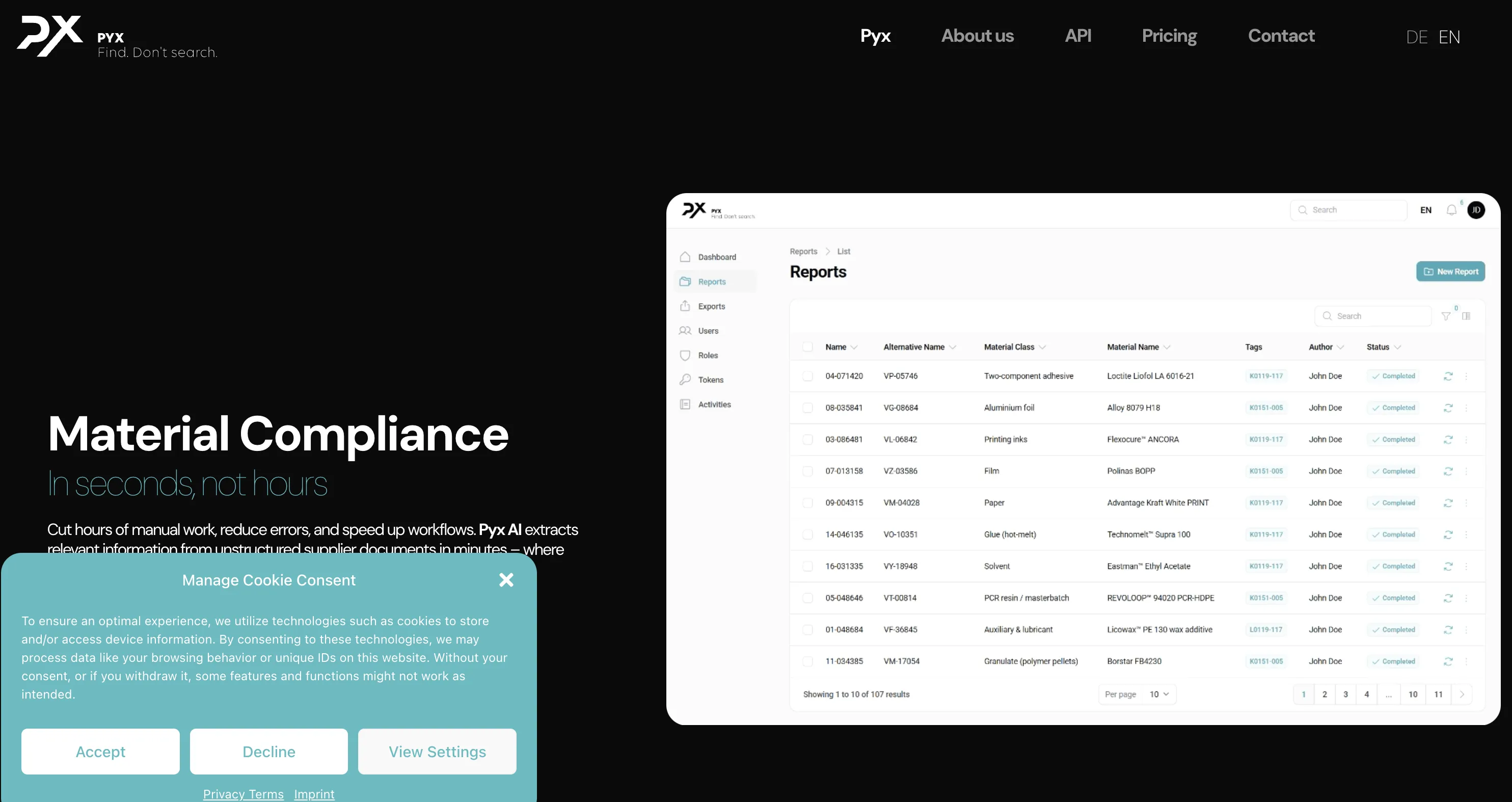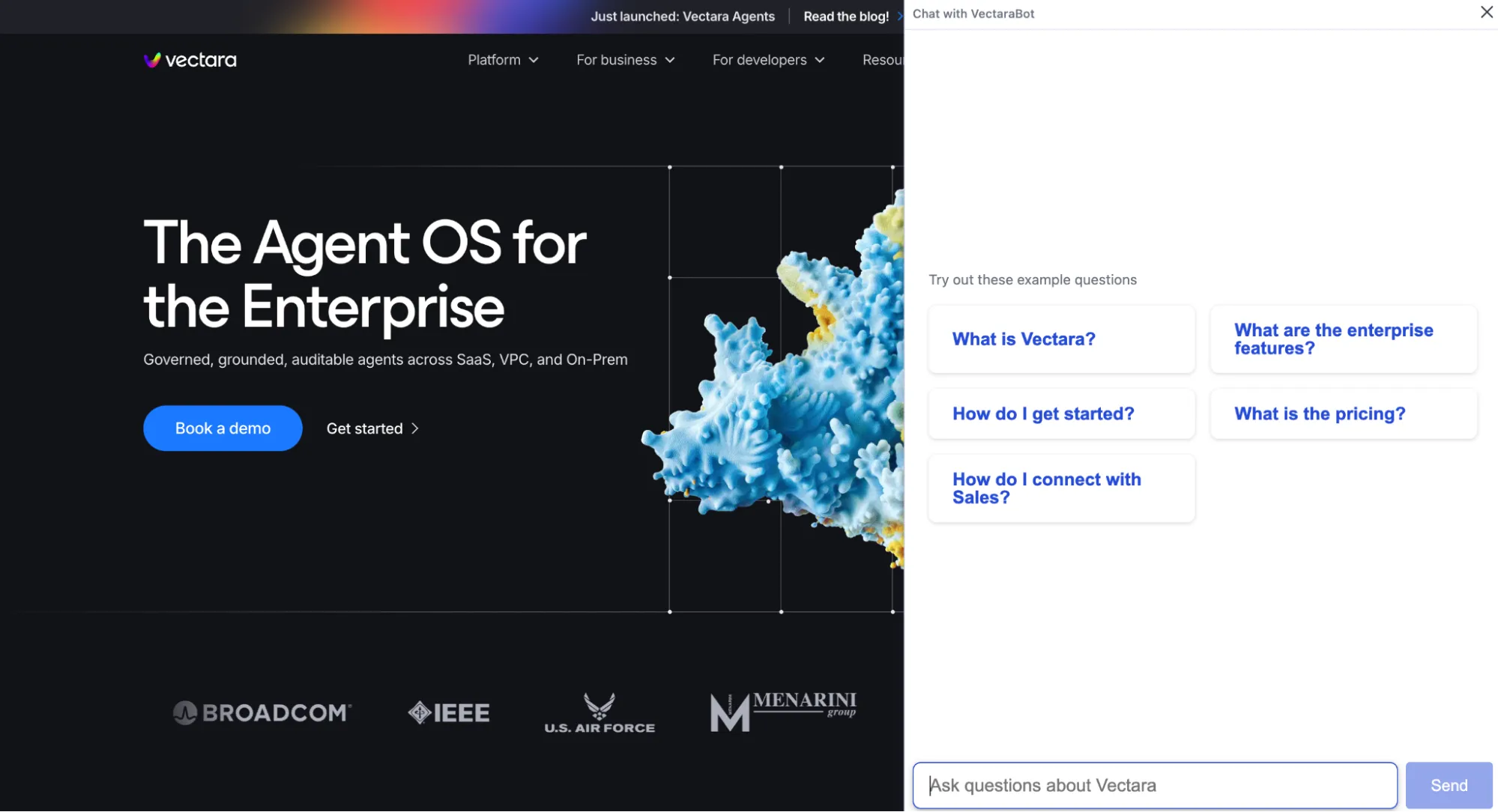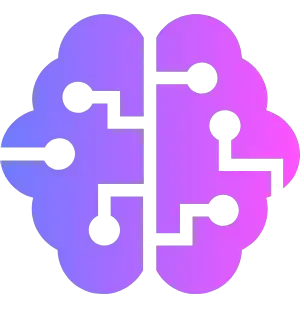Data Ingestion & Knowledge Sources
✅ Auto-Indexing – Points at files, indexes unstructured data automatically without manual setup✅ Auto-Sync – Connected repositories sync automatically, document changes reflected almost instantlyFile Formats – Supports PDF, DOCX, PPT, TXT and common enterprise formats⚠️ Limited Scope – No website crawling or YouTube ingestion, narrower than CustomGPTEnterprise Scale – Handles large corporate data sets, exact limits not published
Document support – PDF, DOCX, HTML automatically indexed (Vectara Platform )Auto-sync connectors – Cloud storage and enterprise system integrations keep data currentEmbedding processing – Background conversion to embeddings enables fast semantic search
1,400+ file formats – PDF, DOCX, Excel, PowerPoint, Markdown, HTML + auto-extraction from ZIP/RAR/7Z archivesWebsite crawling – Sitemap indexing with configurable depth for help docs, FAQs, and public contentMultimedia transcription – AI Vision, OCR, YouTube/Vimeo/podcast speech-to-text built-inCloud integrations – Google Drive, SharePoint, OneDrive, Dropbox, Notion with auto-syncKnowledge platforms – Zendesk, Freshdesk, HubSpot, Confluence, Shopify connectorsMassive scale – 60M words (Standard) / 300M words (Premium) per bot with no performance degradation
⚠️ Standalone Only – Own chat/search interface, not a "deploy everywhere" platform⚠️ No External Channels – No Slack bot, Zapier connector, or public APIWeb/Desktop UI – Users interact through Pyx's interface, minimal third-party chat synergyCustom Integration – Deeper integrations require custom dev work or future updates
REST APIs & SDKs – Easy integration into custom applications with comprehensive toolingEmbedded experiences – Search/chat widgets for websites, mobile apps, custom portalsLow-code connectors – Azure Logic Apps and PowerApps simplify workflow integration
Website embedding – Lightweight JS widget or iframe with customizable positioningCMS plugins – WordPress, WIX, Webflow, Framer, SquareSpace native support5,000+ app ecosystem – Zapier connects CRMs, marketing, e-commerce toolsMCP Server – Integrate with Claude Desktop, Cursor, ChatGPT, WindsurfOpenAI SDK compatible – Drop-in replacement for OpenAI API endpointsLiveChat + Slack – Native chat widgets with human handoff capabilities
Conversational Search – Context-aware Q&A over enterprise documents with follow-up questions⚠️ Internal Focus – Designed for knowledge management, no lead capture or human handoffMulti-Language – Likely supports multiple languages, though not a headline feature⚠️ Basic Analytics – Stores chat history, fewer business insights than customer-facing tools
Vector + LLM search – Smart retrieval with generative answers, context-aware responsesMockingbird LLM – Proprietary model with source citations (details )Multi-turn conversations – Conversation history tracking for smooth back-and-forth dialogue
✅ #1 accuracy – Median 5/5 in independent benchmarks, 10% lower hallucination than OpenAI✅ Source citations – Every response includes clickable links to original documents✅ 93% resolution rate – Handles queries autonomously, reducing human workload✅ 92 languages – Native multilingual support without per-language config✅ Lead capture – Built-in email collection, custom forms, real-time notifications✅ Human handoff – Escalation with full conversation context preserved
⚠️ Minimal Branding – Logo/color tweaks only, designed as internal tool not white-label⚠️ No Embedding – Standalone interface, no domain-embed or widget options availablePyx UI Only – Look stays "Pyx AI" by design, public branding not supportedSecurity Focus – Emphasis on user management and access controls over theming
White-label control – Full theming, logos, CSS customization for brand alignmentDomain restrictions – Bot scope and branding configurable per deploymentSearch UI styling – Result cards and search interface match company identity
Full white-labeling included – Colors, logos, CSS, custom domains at no extra cost2-minute setup – No-code wizard with drag-and-drop interfacePersona customization – Control AI personality, tone, response style via pre-promptsVisual theme editor – Real-time preview of branding changesDomain allowlisting – Restrict embedding to approved sites only
⚠️ Undisclosed Model – Likely GPT-3.5/GPT-4 but exact model not publicly documented⚠️ No Model Selection – Cannot switch LLMs or configure speed vs accuracy tradeoffs⚠️ Single Configuration – Every query uses same model, no toggles or fine-tuningClosed Architecture – Model details, context window, capabilities hidden from users intentionally
Mockingbird default – In-house model with GPT-4/GPT-3.5 via Azure OpenAI availableFlexible selection – Choose model balancing cost versus quality for use caseCustom prompts – Prompt templates configurable for tone, format, citation rules
GPT-5.1 models – Latest thinking models (Optimal & Smart variants)GPT-4 series – GPT-4, GPT-4 Turbo, GPT-4o availableClaude 4.5 – Anthropic's Opus available for EnterpriseAuto model routing – Balances cost/performance automaticallyZero API key management – All models managed behind the scenes
Developer Experience ( A P I & S D Ks)
⚠️ No API – No open API or SDKs, everything through Pyx interface⚠️ No Embedding – Cannot integrate into other apps or call programmaticallyClosed Ecosystem – No GitHub examples, community plug-ins, or extensibility optionsTurnkey Only – Great for ready-made tool, limits deep customization or extensions
Multi-language SDKs – C#, Python, Java, JavaScript with REST API (FAQs )Clear documentation – Sample code and guides for integration, indexing operationsSecure authentication – Azure AD or custom auth setup for API access
REST API – Full-featured for agents, projects, data ingestion, chat queriesPython SDK – Open-source customgpt-client with full API coveragePostman collections – Pre-built requests for rapid prototypingWebhooks – Real-time event notifications for conversations and leadsOpenAI compatible – Use existing OpenAI SDK code with minimal changes
Real-Time Answers – Serves accurate responses from internal documents, sparse public benchmarksAuto-Sync Freshness – Connected repositories keep retrieval context always current automatically⚠️ Limited Transparency – No anti-hallucination metrics or advanced re-ranking details publishedCompetitive RAG – Likely comparable to standard GPT-based systems on relevance control
✅ Enterprise scale – Millisecond responses with heavy traffic (benchmarks )✅ Hybrid search – Semantic and keyword matching for pinpoint accuracy✅ Hallucination prevention – Advanced reranking with factual-consistency scoring
Sub-second responses – Optimized RAG with vector search and multi-layer cachingBenchmark-proven – 13% higher accuracy, 34% faster than OpenAI Assistants APIAnti-hallucination tech – Responses grounded only in your provided contentOpenGraph citations – Rich visual cards with titles, descriptions, images99.9% uptime – Auto-scaling infrastructure handles traffic spikes
Customization & Flexibility ( Behavior & Knowledge)
✅ Auto-Sync Updates – Knowledge base updated without manual uploads or scheduling⚠️ No Persona Controls – AI voice stays neutral, no tone or behavior customization✅ Access Controls – Strong role-based permissions, admins set document visibility per userClosed Environment – Great for content updates, limited for AI behavior or deployment
Indexing control – Configure chunk sizes, metadata tags, retrieval parametersSearch weighting – Tune semantic vs lexical search balance per queryDomain tuning – Adjust prompt templates and relevance thresholds for specialty domains
Live content updates – Add/remove content with automatic re-indexingSystem prompts – Shape agent behavior and voice through instructionsMulti-agent support – Different bots for different teamsSmart defaults – No ML expertise required for custom behavior
Seat-Based Pricing – ~$30 per user per month, predictable monthly costs✅ Cost-Effective Small Teams – Affordable for teams under 50 users⚠️ Large Team Costs – 100 users = $3,000/month, can scale expensivelyUnlimited Content – Document/token limits not published, gated only by user seatsFree Trial + Enterprise – Hands-on trial available, custom pricing for large deployments
Usage-based pricing – Free tier available, bundles scale with growth (pricing )Enterprise tiers – Plans scale with query volume, data size for heavy usageDedicated deployment – VPC or on-prem options for data isolation requirements
Standard: $99/mo – 60M words, 10 botsPremium: $449/mo – 300M words, 100 botsAuto-scaling – Managed cloud scales with demandFlat rates – No per-query charges
✅ GDPR Compliance – Germany-based, implicit EU data protection and regional sovereignty✅ Enterprise Privacy – Data isolated per customer, encrypted in transit and rest✅ No Model Training – Customer data not used for external LLM training✅ Role-Based Access – Built-in controls, admins set document visibility per role⚠️ Limited Certifications – On-prem or SOC 2/ISO 27001/HIPAA not publicly documented
✅ Data encryption – Transit and rest encryption, no model training on your content✅ Compliance certifications – SOC 2, ISO, GDPR, HIPAA (details )✅ Customer-managed keys – BYOK support with private deployments for full control
SOC 2 Type II + GDPR – Third-party audited complianceEncryption – 256-bit AES at rest, SSL/TLS in transitAccess controls – RBAC, 2FA, SSO, domain allowlistingData isolation – Never trains on your data
Observability & Monitoring
Basic Stats – User activity, query counts, top-referenced documents for admins⚠️ No Deep Analytics – No conversation analytics dashboards or real-time loggingAdoption Tracking – Useful for usage monitoring, lighter insights than full suitesSet-and-Forget – Minimal monitoring overhead, contact support for issues
Azure portal dashboard – Query latency, index health, usage metrics at-a-glanceAzure Monitor integration – Azure Monitor and App Insights for custom alertsAPI log exports – Metrics exportable via API for compliance, analysis reports
Real-time dashboard – Query volumes, token usage, response timesCustomer Intelligence – User behavior patterns, popular queries, knowledge gapsConversation analytics – Full transcripts, resolution rates, common questionsExport capabilities – API export to BI tools and data warehouses
✅ Direct Support – Email, phone, chat with hands-on onboarding approach⚠️ No Open Community – Closed solution, no plug-ins or user-built extensionsInternal Roadmap – Product updates from Pyx only, no community marketplaceQuick Setup Focus – Emphasizes minimal admin overhead for internal knowledge search
Microsoft network – Comprehensive docs, forums, technical guides backed by MicrosoftEnterprise support – Dedicated channels and SLA-backed help for enterprise plansAzure ecosystem – Broad partner network and active developer community access
Comprehensive docs – Tutorials, cookbooks, API referencesEmail + in-app support – Under 24hr response timePremium support – Dedicated account managers for Premium/EnterpriseOpen-source SDK – Python SDK, Postman, GitHub examples5,000+ Zapier apps – CRMs, e-commerce, marketing integrations
Additional Considerations
✅ No-Fuss Internal Search – Employees use without coding, simple deployment for teams⚠️ Not Public-Facing – Not ideal for customer chatbots or developer-heavy customizationSiloed Environment – Single AI search environment, not broad extensible platformSimpler Scope – Less flexible than CustomGPT, but faster setup for internal use
✅ Factual scoring – Hybrid search with reranking provides unique factual-consistency scoresFlexible deployment – Public cloud, VPC, or on-prem for varied compliance needsActive development – Regular feature releases and integrations keep platform current
Time-to-value – 2-minute deployment vs weeks with DIYAlways current – Auto-updates to latest GPT modelsProven scale – 6,000+ organizations, millions of queriesMulti-LLM – OpenAI + Claude reduces vendor lock-in
No- Code Interface & Usability
✅ Straightforward UI – Users log in, ask questions, get answers without coding✅ No-Code Admin – Admins connect data sources, Pyx indexes automaticallyMinimal Customization – UI stays consistent and uncluttered by designInternal Q&A Hub – Perfect for employee use, not external embedding or branding
Azure portal UI – Straightforward index management and settings configuration interfaceLow-code options – PowerApps, Logic Apps connectors enable quick non-dev integration⚠️ Technical complexity – Advanced indexing tweaks require developer expertise vs turnkey tools
2-minute deployment – Fastest time-to-value in the industryWizard interface – Step-by-step with visual previewsDrag-and-drop – Upload files, paste URLs, connect cloud storageIn-browser testing – Test before deploying to productionZero learning curve – Productive on day one
Market Position – Turnkey internal knowledge search (Germany), not embeddable chatbot platformTarget Customers – Small-mid European teams needing GDPR compliance and simple deploymentKey Competitors – Glean, Guru, Notion AI; not customer-facing chatbots like CustomGPT✅ Advantages – Simple scope, auto-sync, GDPR compliance, ~$30/user/month predictable pricing⚠️ Use Case Fit – Perfect for <50 user teams, not API integrations or public chatbots
Market position – Enterprise RAG platform between Azure AI Search and chatbot buildersTarget customers – Enterprises needing production RAG, white-label APIs, VPC/on-prem deploymentsKey competitors – Azure AI Search, Coveo, OpenAI Enterprise, Pinecone AssistantCompetitive advantages – Mockingbird LLM, hallucination detection, SOC 2/HIPAA compliance, millisecond responsesPricing advantage – Usage-based with free tier, best value for enterprise RAG infrastructureUse case fit – Mission-critical RAG, white-label APIs, Azure integration, high-accuracy requirements
Market position – Leading RAG platform balancing enterprise accuracy with no-code usability. Trusted by 6,000+ orgs including Adobe, MIT, Dropbox.Key differentiators – #1 benchmarked accuracy • 1,400+ formats • Full white-labeling included • Flat-rate pricingvs OpenAI – 10% lower hallucination, 13% higher accuracy, 34% fastervs Botsonic/Chatbase – More file formats, source citations, no hidden costsvs LangChain – Production-ready in 2 min vs weeks of development
⚠️ Undisclosed LLM – Likely GPT-3.5/GPT-4 but model details not publicly documented⚠️ No Model Selection – Cannot switch LLMs or choose speed vs accuracy configurations⚠️ Opaque Architecture – Context window size and capabilities not exposed to usersSimplicity Focus – Hides technical complexity, users ask questions and get answers⚠️ No Fine-Tuning – Cannot customize model on domain data for specialized responses
✅ Mockingbird LLM – 26% better than GPT-4 on BERT F1, 0.9% hallucination rate✅ Mockingbird 2 – 7 languages (EN/ES/FR/AR/ZH/JA/KO), under 10B parametersGPT-4/GPT-3.5 fallback – Azure OpenAI integration for OpenAI model preferenceHHEM + HCM – Hughes Hallucination Evaluation with Correction Model (Mockingbird-2-Echo)✅ No training on data – Customer data never used for model training/improvementCustom prompts – Templates configurable for tone, format, citation rules per domain
OpenAI – GPT-5.1 (Optimal/Smart), GPT-4 seriesAnthropic – Claude 4.5 Opus/Sonnet (Enterprise)Auto-routing – Intelligent model selection for cost/performanceManaged – No API keys or fine-tuning required
Conversational RAG – Context-aware search over enterprise documents with follow-up support✅ Auto-Sync – Repositories sync automatically, changes reflected almost instantlyDocument Formats – PDF, DOCX, PPT, TXT and common enterprise formats supported⚠️ No Advanced Controls – Chunking, embedding models, similarity thresholds not exposed⚠️ Limited Transparency – No citation metrics or anti-hallucination details publishedClosed System – Optimized for internal Q&A, limited visibility into retrieval architecture
✅ Hybrid search – Semantic vector + BM25 keyword matching for pinpoint accuracy✅ Advanced reranking – Multi-stage pipeline optimizes results before generation with relevance scoring✅ Factual scoring – HHEM provides reliability score for every response's grounding quality✅ Citation precision – Mockingbird outperforms GPT-4 on citation metrics, traceable to sourcesMultilingual RAG – Cross-lingual: query/retrieve/generate in different languages (7 supported)Structured outputs – Extract specific information for autonomous agent integration, deterministic data
GPT-4 + RAG – Outperforms OpenAI in independent benchmarksAnti-hallucination – Responses grounded in your content onlyAutomatic citations – Clickable source links in every responseSub-second latency – Optimized vector search and cachingScale to 300M words – No performance degradation at scale
✅ Internal Knowledge Search – Employees asking questions about company documents and policies✅ Team Onboarding – New hires finding information without bothering colleagues✅ Policy Lookup – HR, compliance, operational procedure retrieval for staff✅ Small European Teams – GDPR-compliant internal search with EU data residency⚠️ NOT SUITABLE FOR – Public chatbots, customer support, API integrations, multi-channel deployment
Regulated industries – Health, legal, finance needing accuracy, security, SOC 2 complianceEnterprise knowledge – Q&A systems with precise answers from large document repositoriesAutonomous agents – Structured outputs for deterministic data extraction, decision-making workflowsWhite-label APIs – Customer-facing search/chat with millisecond responses at enterprise scaleMultilingual support – 7 languages with single knowledge base for multiple localesHigh accuracy needs – Citation precision, factual scoring, 0.9% hallucination rate (Mockingbird-2-Echo)
Customer support – 24/7 AI handling common queries with citationsInternal knowledge – HR policies, onboarding, technical docsSales enablement – Product info, lead qualification, educationDocumentation – Help centers, FAQs with auto-crawlingE-commerce – Product recommendations, order assistance
✅ GDPR Compliance – Germany-based with implicit EU data protection compliance✅ German Data Residency – EU storage location for regional data sovereignty requirements✅ Enterprise Privacy – Customer data isolated, encrypted in transit and at rest✅ Role-Based Access – Built-in controls, admins set document visibility per user⚠️ Limited Certifications – SOC 2, ISO 27001, HIPAA not publicly documented
✅ SOC 2 Type 2 – Independent audit demonstrating enterprise-grade operational security controls✅ ISO 27001 + GDPR – Information security management with EU data protection compliance✅ HIPAA ready – Healthcare compliance with BAAs available for PHI handling✅ Encryption – TLS 1.3 in transit, AES-256 at rest with BYOK support✅ Zero data retention – No model training on customer data, content stays privatePrivate deployments – VPC or on-premise for data sovereignty and network isolation
SOC 2 Type II + GDPR – Regular third-party audits, full EU compliance256-bit AES encryption – Data at rest; SSL/TLS in transitSSO + 2FA + RBAC – Enterprise access controls with role-based permissionsData isolation – Never trains on customer dataDomain allowlisting – Restrict chatbot to approved domains
Seat-Based Pricing – ~$30 per user per month✅ Small Team Value – Affordable for teams under 50 users, predictable costs⚠️ Scalability Cost – 100 users = $3,000/month, expensive for large organizationsUnlimited Content – No published document limits, gated only by user seatsFree Trial + Enterprise – Evaluation available, custom pricing for volume discounts
30-day free trial – Full enterprise feature access for evaluation before commitmentUsage-based pricing – Pay for query volume and data size with scalable tiersFree tier – Generous free tier for development, prototyping, small production deploymentsEnterprise pricing – Custom pricing for VPC/on-prem installations, heavy usage bundles available✅ Transparent pricing – No per-seat charges, storage surprises, or model switching feesFunding – $53.5M raised ($25M Series A July 2024, FPV/Race Capital)
Standard: $99/mo – 10 chatbots, 60M words, 5K items/botPremium: $449/mo – 100 chatbots, 300M words, 20K items/botEnterprise: Custom – SSO, dedicated support, custom SLAs7-day free trial – Full Standard access, no chargesFlat-rate pricing – No per-query charges, no hidden costs
✅ Direct Support – Email, phone, chat with hands-on onboarding approach✅ Quick Deployment – Minimal admin overhead, connect sources and start asking questions⚠️ No Open Community – Closed solution, no plug-ins or user extensions⚠️ No Developer Docs – No API documentation or programmatic access guidesInternal Roadmap – Updates from Pyx only, no user-contributed features
Enterprise support – Dedicated channels and SLA-backed help for enterprise customersMicrosoft network – Extensive infrastructure, forums, technical guides backed by MicrosoftComprehensive docs – API references, integration guides, SDKs at docs.vectara.comSample code – Pre-built examples, Jupyter notebooks, quick-start guides for rapid integrationActive community – Developer forums for peer support, knowledge sharing, best practices
Documentation hub – Docs, tutorials, API referencesSupport channels – Email, in-app chat, dedicated managers (Premium+)Open-source – Python SDK, Postman, GitHub examplesCommunity – User community + 5,000 Zapier integrations
Limitations & Considerations
⚠️ No Public API – Cannot embed or call programmatically, standalone UI only⚠️ No Messaging Integrations – No Slack, Teams, WhatsApp or chat platform connectors⚠️ Limited Branding – Minimal customization, not white-label solution for public deployment⚠️ No Advanced Controls – Cannot configure RAG parameters, model selection, retrieval strategies⚠️ Seat-Based Scaling – Expensive for large orgs vs usage-based pricing models✅ Best For – Small European teams (<50 users) prioritizing simplicity and GDPR over flexibility
⚠️ Azure ecosystem focus – Best with Azure services, less smooth for AWS/GCP organizations⚠️ Developer expertise needed – Advanced indexing requires technical skills vs turnkey no-code tools⚠️ No drag-and-drop GUI – Azure portal management but no chatbot builder like Tidio/WonderChat⚠️ Limited model selection – Mockingbird/GPT-4/GPT-3.5 only, no Claude/Gemini/custom models⚠️ Sales-driven pricing – Contact sales for enterprise pricing, less transparent than self-serve platforms⚠️ Overkill for simple bots – Enterprise RAG unnecessary for basic FAQ or customer service
Managed service – Less control over RAG pipeline vs build-your-ownModel selection – OpenAI + Anthropic only; no Cohere, AI21, open-sourceReal-time data – Requires re-indexing; not ideal for live inventory/pricesEnterprise features – Custom SSO only on Enterprise plan
⚠️ NO Agent Capabilities – No autonomous agents, tool calling, or multi-agent orchestrationConversational Search Only – Context-aware dialogue for Q&A, not agentic or autonomous behaviorBasic RAG Architecture – Standard retrieval without function calling, tool use, or workflows⚠️ No External Actions – Cannot invoke APIs, execute code, query databases, or interact externallyInternal Knowledge Focus – Employee Q&A about documents, not task automation or workflows
Agentic RAG Framework – Python library for autonomous agents: emails, bookings, system integrationAgent APIs (Tech Preview) – Customizable reasoning models, behavioral instructions, tool access controlsLlamaIndex integration – Rapid tool creation connecting Vectara corpora, single-line code generationMulti-LLM support – OpenAI, Anthropic, Gemini, GROQ, Together.AI, Cohere, AWS Bedrock integrationStep-level audit trails – Source citations, reasoning steps, decision paths for governance compliance✅ Grounded actions – Document-grounded decisions with citations, 0.9% hallucination rate (Mockingbird-2-Echo)⚠️ Developer platform – Requires programming expertise, not for non-technical teams⚠️ No chatbot UI – No polished widgets or turnkey conversational interfaces⚠️ Tech preview status – Agent APIs subject to change before general availability
Custom AI Agents – Autonomous GPT-4/Claude agents for business tasksMulti-Agent Systems – Specialized agents for support, sales, knowledgeMemory & Context – Persistent conversation history across sessionsTool Integration – Webhooks + 5,000 Zapier apps for automationContinuous Learning – Auto re-indexing without manual retraining
R A G-as-a- Service Assessment
⚠️ NOT TRUE RAG-AS-A-SERVICE – Standalone internal app, not API-accessible RAG platformTurnkey Application – Self-contained Q&A tool vs developer-accessible RAG infrastructure⚠️ No API Access – No REST API, SDKs, programmatic access unlike CustomGPT/VectaraClosed Application – Web/desktop interface only, cannot build custom applications on topSaaS vs RaaS – Software-as-a-Service (standalone app) NOT Retrieval-as-a-Service (API infrastructure)Best Comparison Category – Internal search tools (Glean, Guru), not developer RAG platforms
Platform Type – TRUE ENTERPRISE RAG-AS-A-SERVICE: Agent OS for trusted AICore Mission – Deploy AI assistants/agents with grounded answers, safe actions, always-on governanceTarget Market – Enterprises needing production RAG, white-label APIs, VPC/on-prem deploymentsRAG Implementation – Mockingbird LLM (26% better than GPT-4), hybrid search, multi-stage rerankingAPI-First Architecture – REST APIs, SDKs (C#/Python/Java/JS), Azure integration (Logic Apps/Power BI)Security & Compliance – SOC 2 Type 2, ISO 27001, GDPR, HIPAA, BYOK, VPC/on-premAgent-Ready Platform – Python library, Agent APIs, structured outputs, audit trails, policy enforcementAdvanced RAG Features – Hybrid search, reranking, HHEM scoring, multilingual retrieval (7 languages)Funding – $53.5M raised ($25M Series A July 2024, FPV/Race Capital)⚠️ Enterprise complexity – Requires developer expertise for indexing, tuning, agent configuration⚠️ No no-code builder – Azure portal management but no drag-and-drop chatbot builder⚠️ Azure ecosystem focus – Best with Azure, less smooth for AWS/GCP cross-cloud flexibilityUse Case Fit – Mission-critical RAG, regulated industries (SOC 2/HIPAA), white-label APIs, VPC/on-prem
Platform type – TRUE RAG-AS-A-SERVICE with managed infrastructureAPI-first – REST API, Python SDK, OpenAI compatibility, MCP ServerNo-code option – 2-minute wizard deployment for non-developersHybrid positioning – Serves both dev teams (APIs) and business users (no-code)Enterprise ready – SOC 2 Type II, GDPR, WCAG 2.0, flat-rate pricing











Join the Discussion
Loading comments...